End float success on the compound. Down to 0.001". I confirmed tonight that while I had dealt with the worn 'counterbore' groove in the 3 hole plate (part 9-307) by flipping it over and presenting a pristine face to the boss on the screw, I had NOT looked closely at that boss on the screw. Sure enough, it was no longer square where it had been wearing into the plate. It had a taper and a radius from wear. A light touch with a cutter and it was square and sharp again. On reassembly, I was able to get the float down to ~.004" and still have the dial work. The dial was binding with too much friction against the 3- hole plate while traveling in one direction (Gibs are tight on purpose). I had some 1/32" teflon sheet in the shop. Made a quick washer to go between the dial and the 3-hole plate. I can make the end float zero now but it works a bit smoother at 0.001".
Amazingly, the compound leadscrew and nut have an excellent fit. I can't feel any backlash by hand. I'd have to put my "last word" on it to measure if there is any.
This bandaid will probably bide me over for a while. I only have time for stuff that really needs to be done.
As you mentioned Robert, I do have about 0.015 backlash in the crossfeed system. Only a small portion is end float (little visual evidence of 'gapping" at the dial), most is leadscrew to nut fit I imagine. I saw the bit about cocking the nut. Hmm. Maybe later. I want to be careful about loading the cross feed gearing too much. The FEEDscrew gear male key is only a feather sticking up right now. It could shear any moment. I have the replacements. Thanks for the tips about the 10F-46 assembly.
Since I'm talking about the cross feed, I found it was kinda' tough to disengage the crossfeed via the mushroom button on the apron in an accurate fashion. Sometimes it would resist movement and the cutter would go well past center. Yesterday , while playing, I realized it was very easy (and in my opinion safe for the machine) to simply disengage the QCGB to make the screw stop turning. I chose to use the left lever.(ABCDE) Afterwards the mushroom button was easy to move.

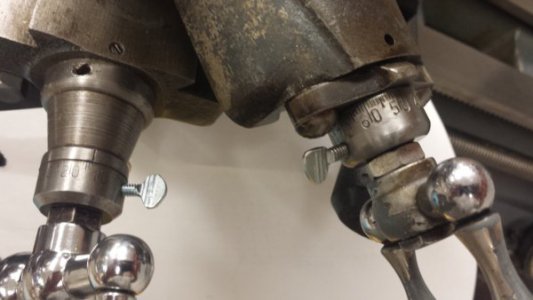
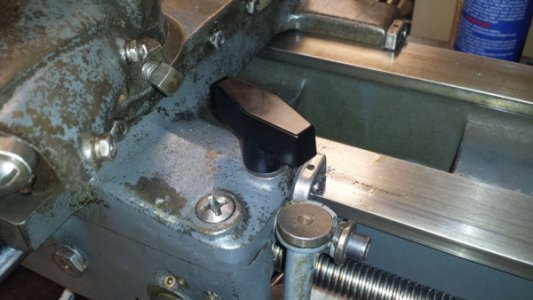
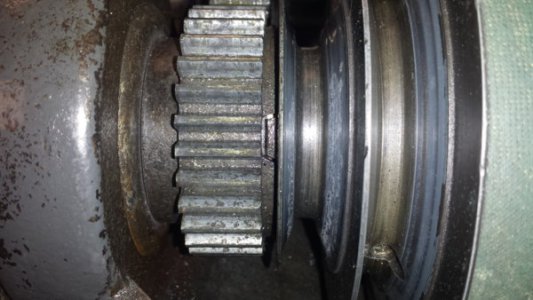
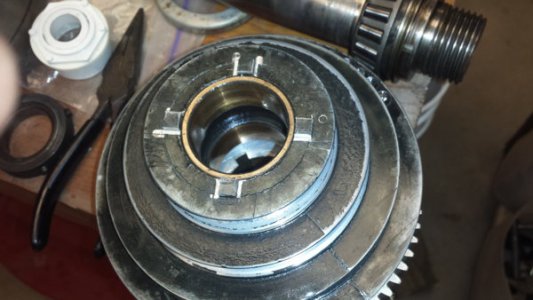
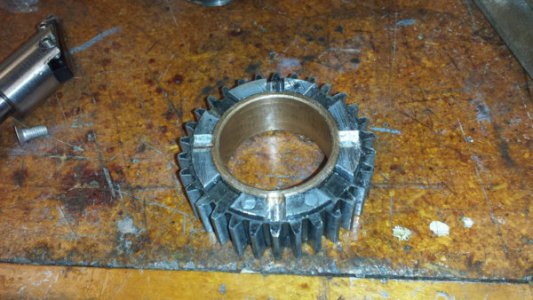
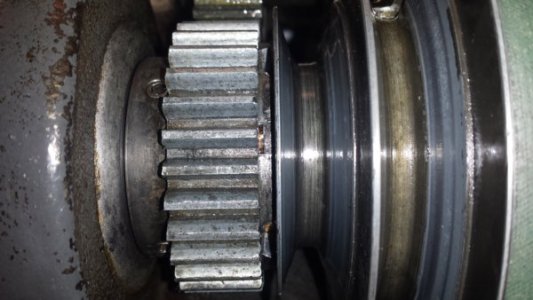
 ) that included the holders, a couple of dead centers, a cutoff blade, a dovetail cutter and an edge finder for the mill (after 10 years of using paper
) that included the holders, a couple of dead centers, a cutoff blade, a dovetail cutter and an edge finder for the mill (after 10 years of using paper